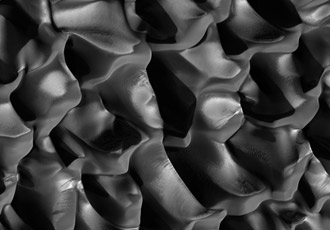Data coming from the Mars rover show a possible malfunction in two units of the rover that has so far excelled in the amount of information it sends to Earth

Data coming from the Mars Rover (MRO) indicates a possible malfunction in two units of the rover that has so far excelled in the amount of information it sends to Earth.
The information from two units of the spacecraft is fragmented and NASA scientists are trying to find out the reason for this. All other parts work properly.
Since the start of the spacecraft's operation in November 2006, the spacecraft has transferred enough information in the amount of 1,000 CD-ROMs, information equal to all the data transmitted by the Mars Global Surveyor spacecraft between the years 1997 and 2006
Last November the spacecraft began to show malfunctions from one of the fourteen cameras on the Mars rover. Later, similar faults began to appear in five more cameras. Heating the cameras reduces the malfunctions to some extent.
The second fault is related to the part that locates the Mediterranean horizon and the climate in thirteen tracks in each Yu. A deviation was detected in tracking the routes. This glitch has been fixed. In mid-January, the malfunctions returned with greater frequency.
In the coming months, the flow of information coming from the spacecraft should increase with the expected approach in the orbits of Earth and Mars. The information is expected to reach the size of 5,000 CDs which will increase the information we have about Mars and the changes it is undergoing.

One response
Sometimes it is recommended to be a little more precise...
In a NASA news release it was stated that the (one) camera has 14 pairs of detectors, of which one detector was damaged and it transmits a noisy signal
relatively. And the heating reduces or completely increases these noises
There is also a suspicion that five more detectors are showing this phenomenon